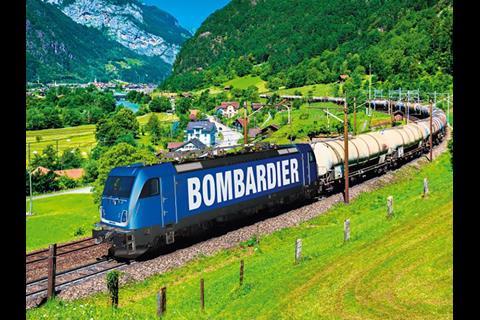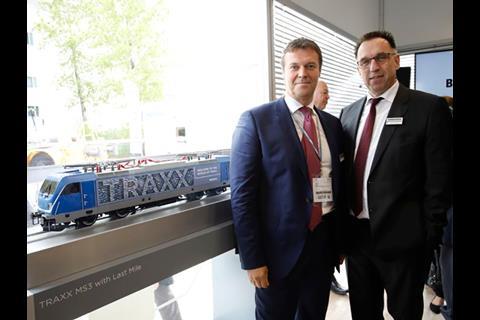EUROPE: Bombardier Transportation announced two additions to its Traxx locomotive family at the Transport Logistcs trade fair in München on May 9.
The Traxx MS3 is designed for 15 kV 16·7 Hz, 25 kV 50 Hz AC and 1·5 and 3 kV DC power supplies, the four most common electrification systems in Europe. It is rated at 6 MW, has a maximum speed of 160 km/h, and offers options for radio remote control and a 230 kW last-mile module for use in sidings and terminals. It is planned to obtain approval for operation in the Netherlands, Belgium, France, Germany, Austria, Switzerland, Italy, Poland, the Czech Republic, Slovakia, Hungary, Slovenia, Croatia and Romania.
The Traxx DC3 would be able to operate on 3 kV DC routes, for example in Italy and Poland, and under 1·5 kV DC with reduced performance. It would have an optional Stage IIIB last mile-engine and a maximum speed of 140 or 160 km/h.
The locomotives are designed for condition-based and modular maintenance to reduce downtime. Bombardier said their improved tractive effort and adhesion control mean they would be able to pull one more vehicle than similar designs. The new Traxx models would be 1·9% more efficient, which would save ‘around €170 000 over the locomotive's 30-year service life’. By switching off individual traction motors ‘Ecomode’ operation would cut overall energy consumption by 5%.
There are around 1 750 Traxx locomotives in operation in Europe. The MS3 and DC3 are derived from the Traxx AC3, of which more than 280 have been sold.
‘Our new locomotive platform offers operators suitable solutions for all electrification systems’, said Michael Fohrer, President of Locomotives & Light Rail Vehicles at Bombardier Transportation. ‘The advantages are mainly in the areas of tractive power, economical and ecological operation and tailor-made service variants. Our new platform will enable operators to rely upon the last-mile feature across all of Europe, making it possible to bridge non-electrified track sections in harbours and at borders as well as compensate for power failure.’




















